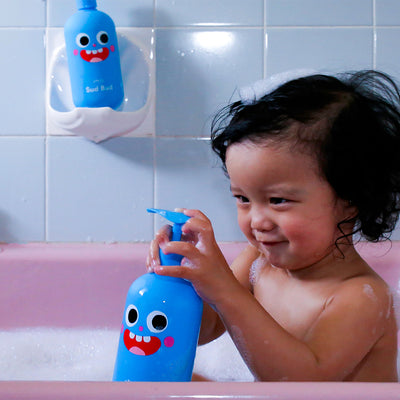Monsters. Are. Everywhere. Just ask your four-year-old...
It’s hard to watch your child spiral in irrational fear, but it can help your anxiety response to know that it’s totally normal for your children to be afraid of the dark, the neighbour’s dog or those suspicious green trolls under their bed. “Fear acts as a form of security or protection in both children and adults,” explains Lysn psychologist Breanna Jayne Sada. “Without fear we would jump head-first into all sorts of danger. The body’s fear response is designed to keep us safe.”
While fear is all part of the growing-up process, it’s important to help your toddler deal with it rather than hide from it, Sada adds. “Avoiding what makes you fearful might temporarily ease your distress, but this can be a dysfunctional coping strategy. We want to teach children that avoidance is not a helpful tactic,” she explains. “Because a child’s brain is growing neural pathways, our coping strategies as children can become our coping strategies as adults. So, developing unhealthy coping strategies like avoidance or poor emotional regulation at a young age and not addressing this might lead to similar patterns as the child grows.”
What’s wigging them out?
Monsters, mostly. Kids’ imagination takes off around the age of three, but they don’t develop the ability to distinguish between reality and fantasy until later – which can leave them in a really scary place. Imagine being able to see gremlins in every dark corner of your bedroom – and not being able to tell if they’re real. (Yikes.) The same goes for nightmares, which can feel terrifyingly realistic.
Also Very Scary: dogs, loud noises like thunderstorms, strangers and (the idea of) intruders. For toddlers, things like plugholes, which come with strange, gurgling noises, can be frightening because they don’t yet understand size and space, and that they’re in no danger of falling down the drain with the bathwater.
How do you help?
First up – be sympathetic, because these fears are very real for little minds, even if you can’t relate. Then calmly reassure your child that they’re not in any danger. “Remind them that they’re safe and nothing bad is going to happen, and discuss why nothing bad is going to happen – for example, say, ‘I am here, you are OK, you’re safe’,” suggests Sada. “At the same time, you can work to calm the child’s physical anxiety response with deep breaths, rubbing, tapping, soothing – anything that will calm and restore the body’s natural rhythms.”
In the long-term, you can work with your child to confront and gradually overcome their heebie-jeebies. “In the wise words of Maria Von Trapp, the best way to overcome your fears is ‘to face them’. As adults we can help young children do this in a safe and controlled way,” Sada says. “For example, if your child is scared of the dark you might sit with them in a dark room turning on and off a torch, slowly increasing the time the light is off. At the same time, remind them they are safe and help them take slow, deep breaths. You might do this over a few days or weeks and encourage them to take control of the torch and slowly increase the time it’s dark.”
(Or, y’know, just spray every ‘monster zone’ in their room with a bit of Bad Dream Buster before lights out. Boogeymen don’t stand a chance.)




Comments